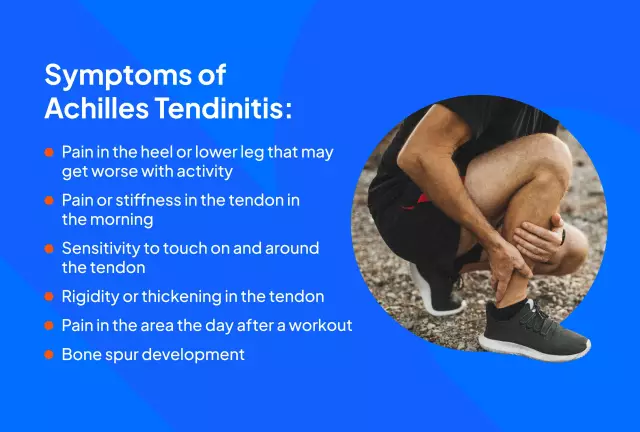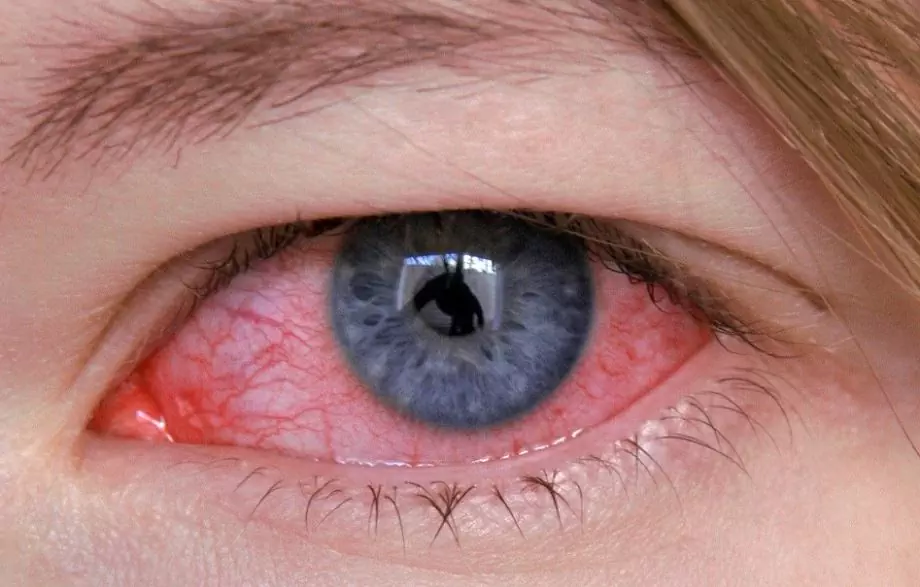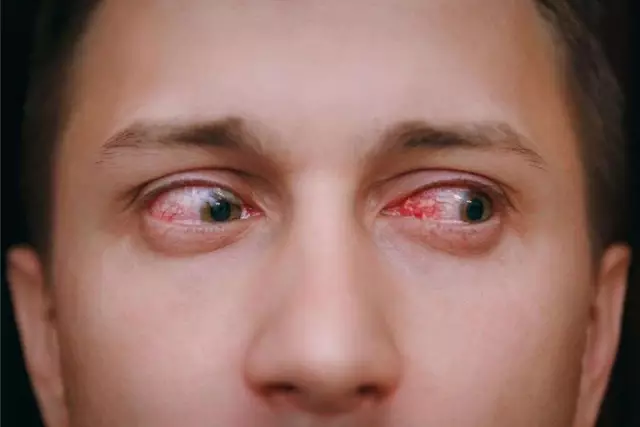- Author Rachel Wainwright [email protected].
- Public 2023-12-15 07:39.
- Last modified 2025-11-02 20:14.
Tendonitis

The inflammatory process in the tissues by which muscles attach to the bone is called tendinitis. Most often, the disease occurs at the point of contact between the tendon and the bone, but in some cases tendonitis develops along the tendon. Before this disease, everyone is equal, regardless of gender, age and profession. But still there is a category of people who get tendinitis more often than others. These include people over 40 due to age-related changes in the tendons and those who play sports or physical labor due to frequent stress on the same area.
The inflammatory process can develop almost anywhere where there is a tendon. Tendinitis of the base of the thumb, shoulder, elbow, knee, and hip joints, and the heel tendon is common. In children and adolescents, tendonitis of the knee joint is most common.
Causes of tendonitis
The most common causes of tendonitis are:
- significant physical stress on the joint for a long period of time. Shoulder tendinitis quite often occurs in tennis players, shot or hammer throwers, painters, gardeners and gardeners;
- injuries;
- infections caused by bacteria, such as gonorrhea;
- the presence of diseases of a rheumatic nature (gout or arthritis);
- an allergic reaction of the body to medications;
- anatomical features of the body structure. Different lengths of the limbs contribute to the development of knee tendonitis;
- Weakened tendons or their improper development;
- non-observance of correct posture.
Symptoms of tendonitis
The most prominent symptoms of tendonitis are pain and limitation of movement. Painful sensations at the site of inflammation and nearby areas persistent for a long time. The pain can come on suddenly, but sometimes the soreness increases as the inflammation intensifies. There is increased sensitivity when probing the affected tendon.
Also, among the symptoms of tendonitis, there is a creaking sound heard at a distance, which is formed during the movement of the diseased limb. Redness and hyperthermia may occur over the tendon. The course of the disease is complicated by calcium deposits in the joints, which contributes to the weakening of the joint capsule and tendon.
With tendinitis of the shoulder joint, the mobility of the shoulder decreases and the range of motion decreases. In the passive state, there is no pain. One of the alarming symptoms of tendonitis is painful sensations that increase towards night, which can cause sleep disorders not only because of the severity, but also the forced position of the body.
Difficulty walking, running, climbing or descending stairs is experienced by patients with knee tendinitis. Problems with holding objects in the hands and performing various actions arise with inflammation of the tendons in the forearm.
Tendinitis treatment

First of all, with tendinitis, it is necessary to ensure complete rest. For these purposes, crutches or a cane are suitable for lesions of the lower extremities, and a bandage, splint or splint is necessary for tendinitis of the shoulder joint. Anti-inflammatory drugs and pain relievers are also prescribed, ointments with a similar effect can be used topically.
A good effect in the treatment of tendinitis is given by injections of corticosteroids directly into the lesion. With their help, painful sensations are quickly eliminated, and the inflammatory process attenuates. Physiotherapy has been successfully used as an adjunct to the main treatment.
In case of ineffectiveness or a strong inflammatory process, antibiotics are prescribed. In the most extreme cases, surgery is necessary.
It should be remembered that the treatment of tendinitis will bring the desired effect only if the patient follows the recommendations regarding the rest of the affected limb. Maintaining the same rhythm of work will provoke further development of the disease.
Prevention of tendonitis
Preventing tendonitis is much easier than treating it later. Regardless of what kind of physical activity is coming, it is necessary to warm up before starting it.
With physical activity, the pace of the load should be increased gradually; it is not recommended to work at the limit of your strength. At the slightest sign of pain, you should change your activity or arrange a rest. If pain continues to appear when performing any actions, it is better not to return to them in the future.
For the prevention of shoulder tendinitis, it is advisable to avoid work performed with hands raised up. If the profession obliges you to do this, but it is necessary to periodically give full rest to the upper limbs.
In most cases, tendonitis can be avoided by refraining from performing monotonous movements with the same joint for a long time.
YouTube video related to the article:
The information is generalized and provided for informational purposes only. At the first sign of illness, see your doctor. Self-medication is hazardous to health!






